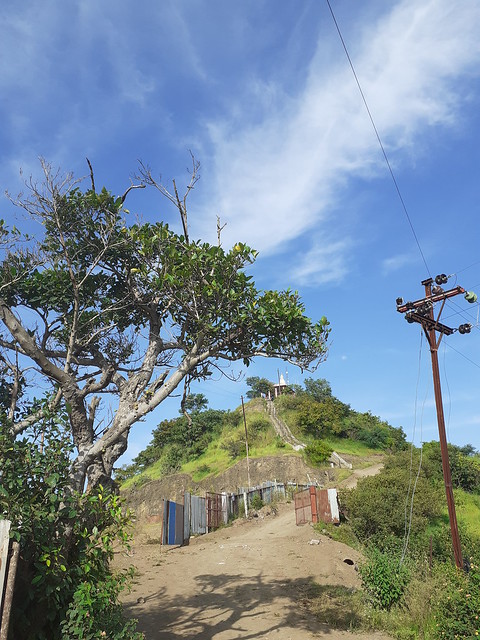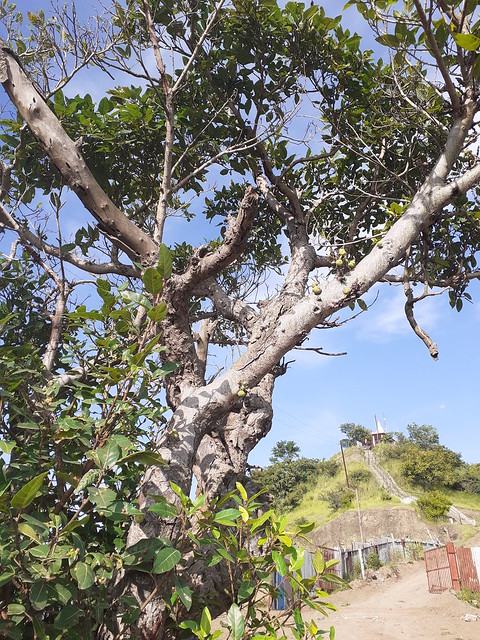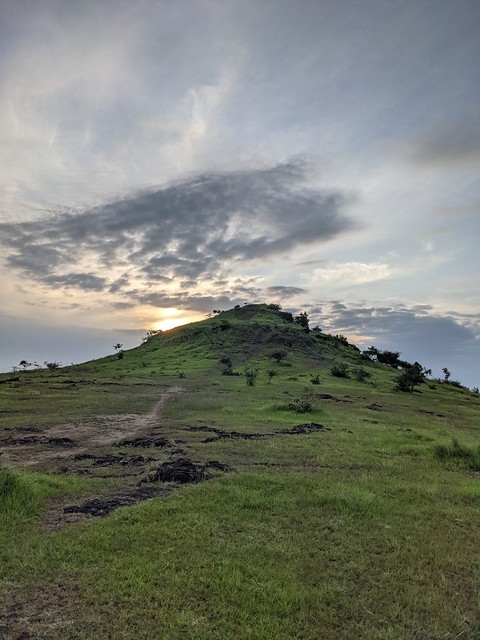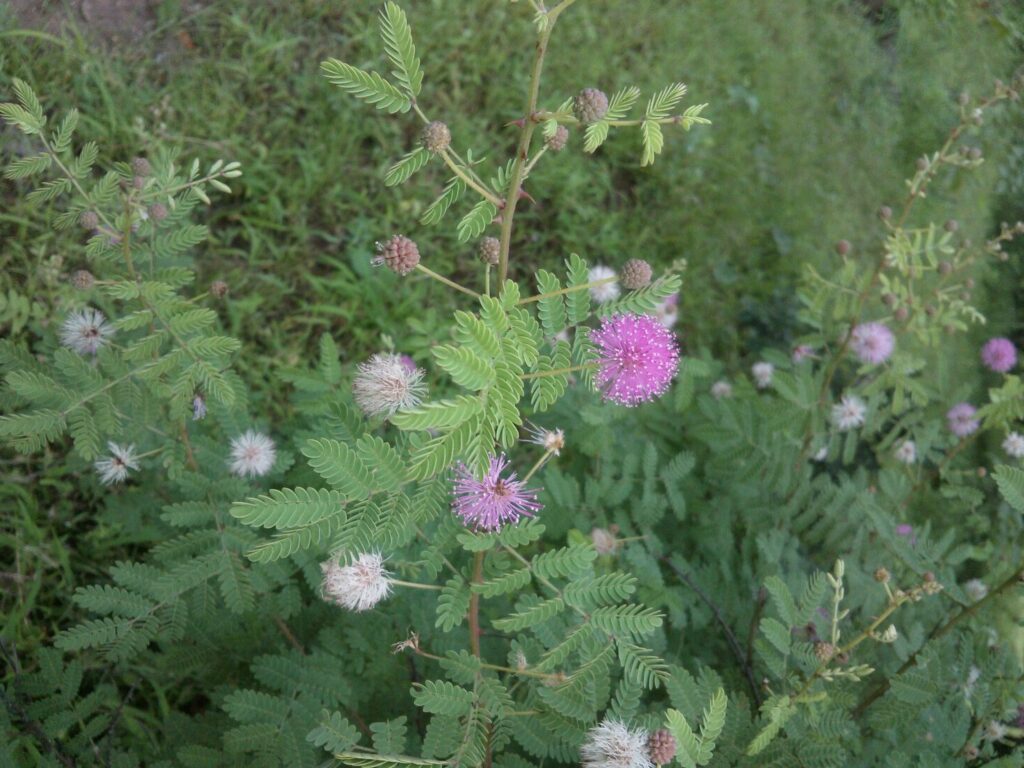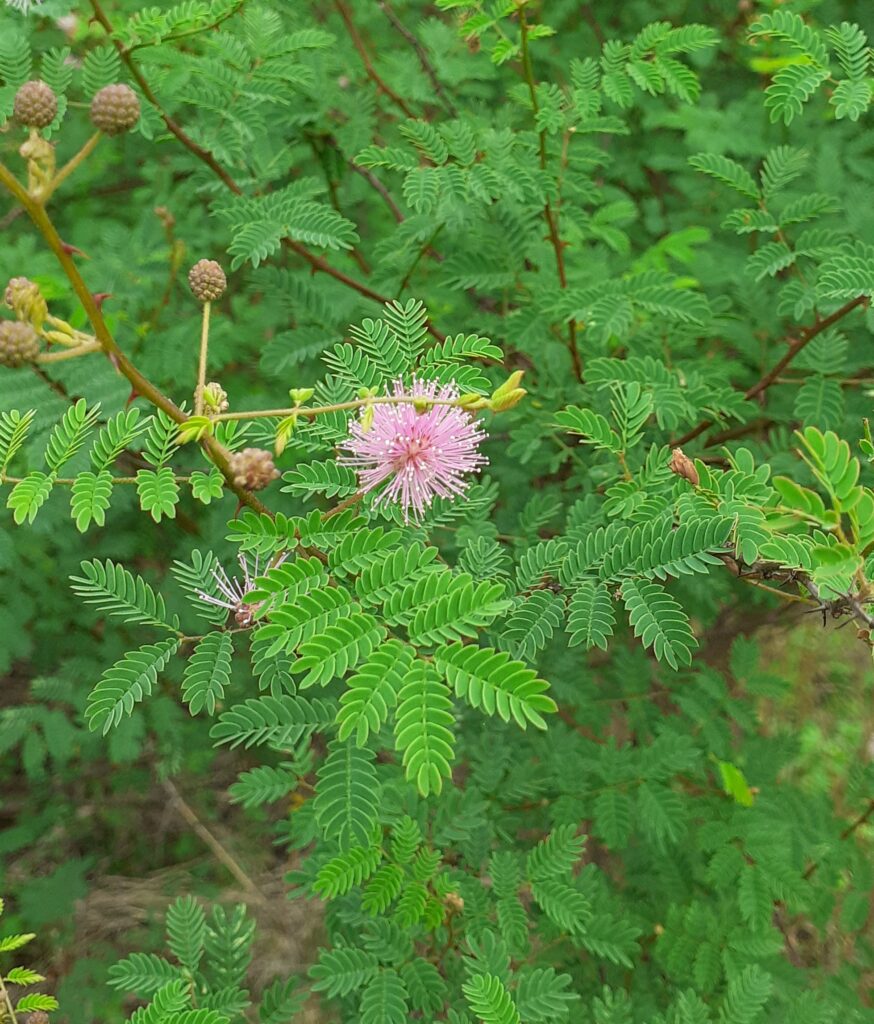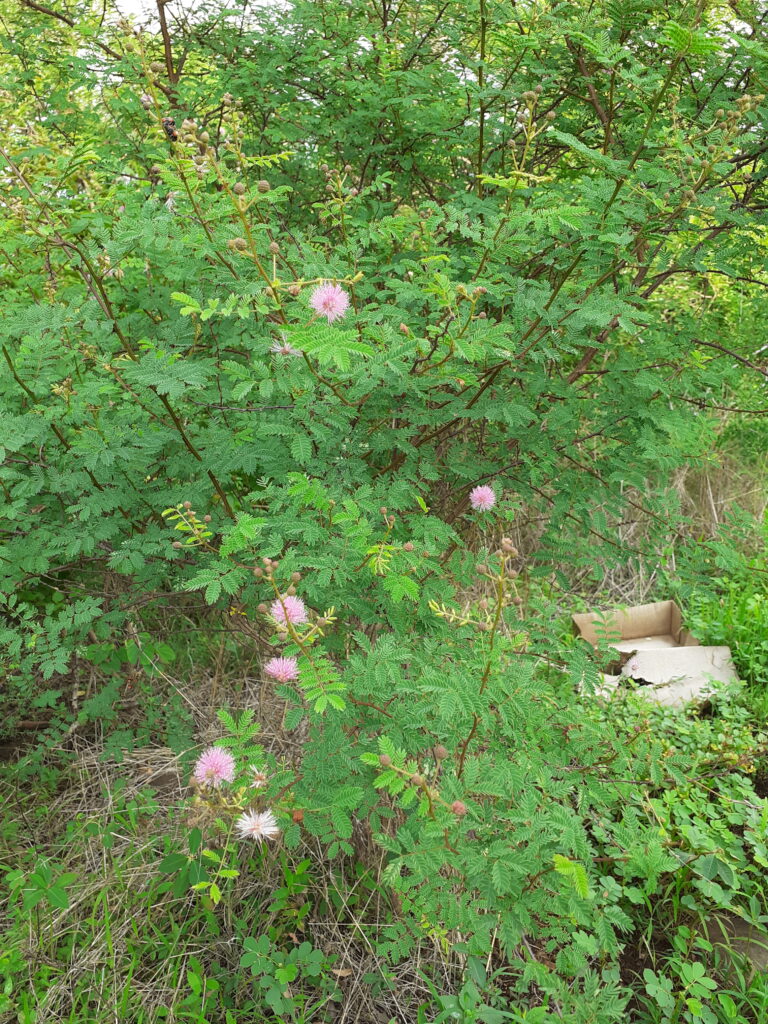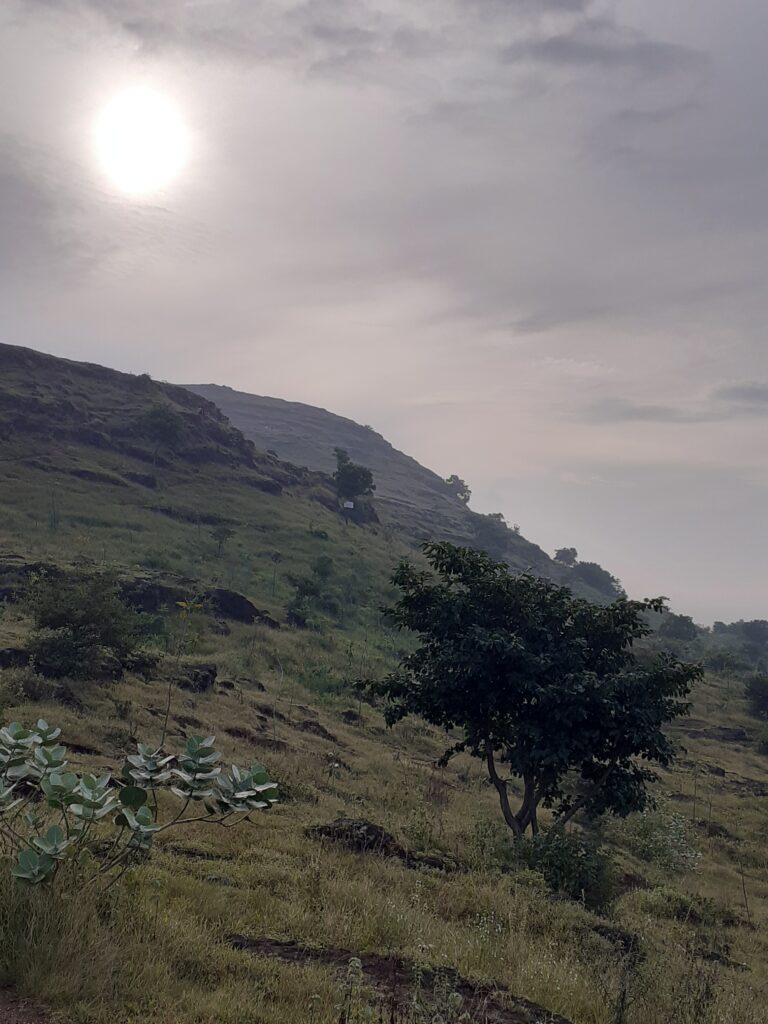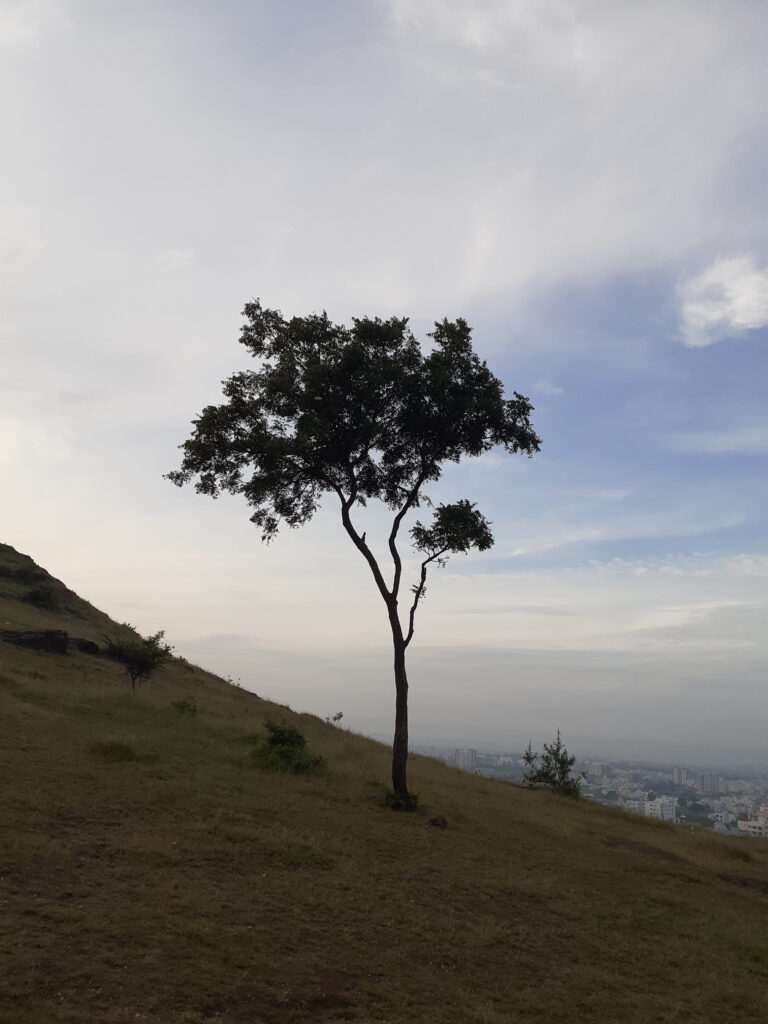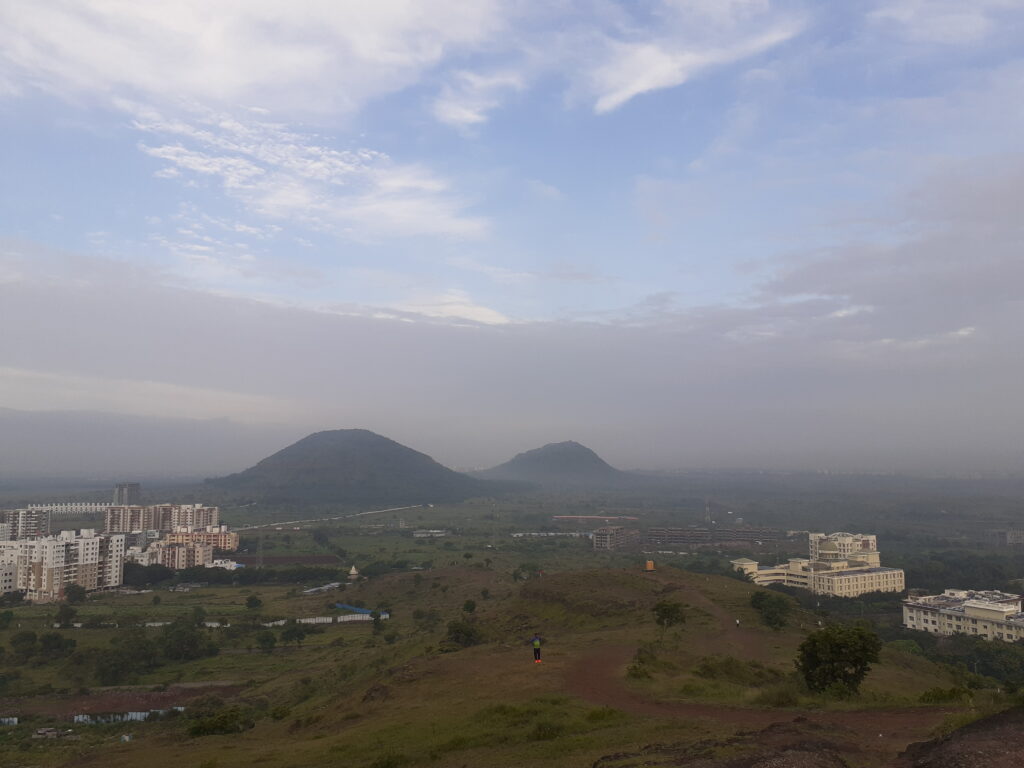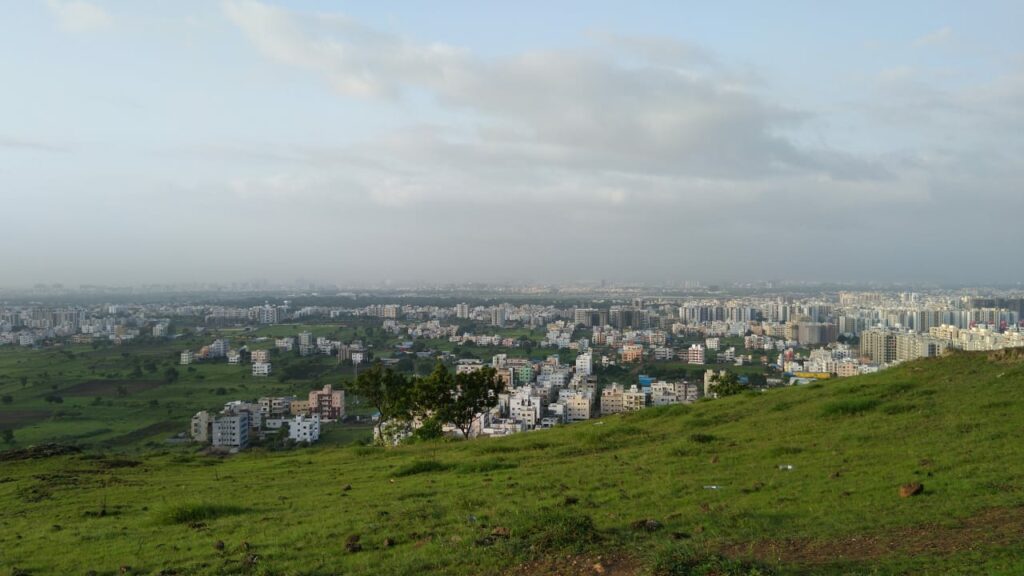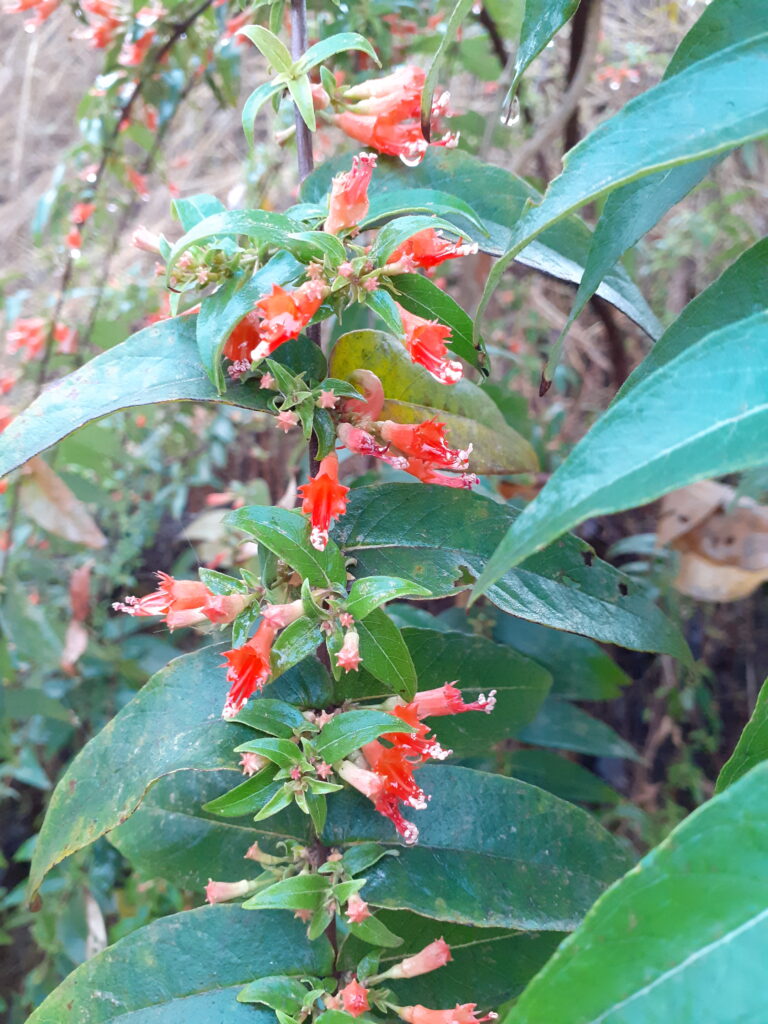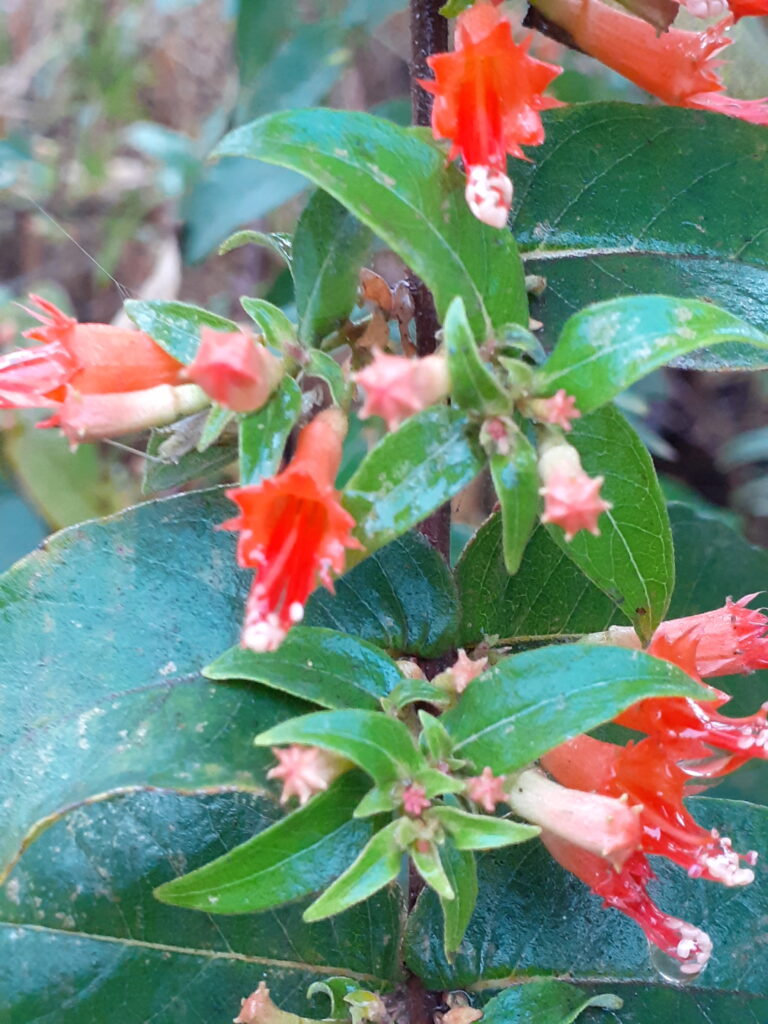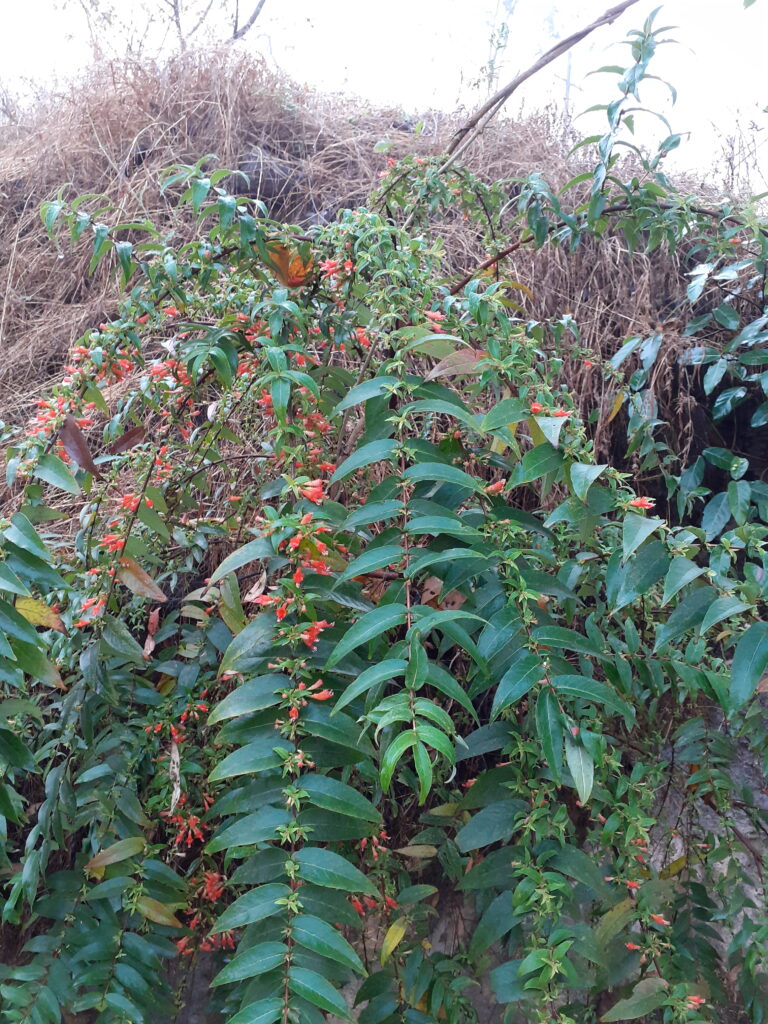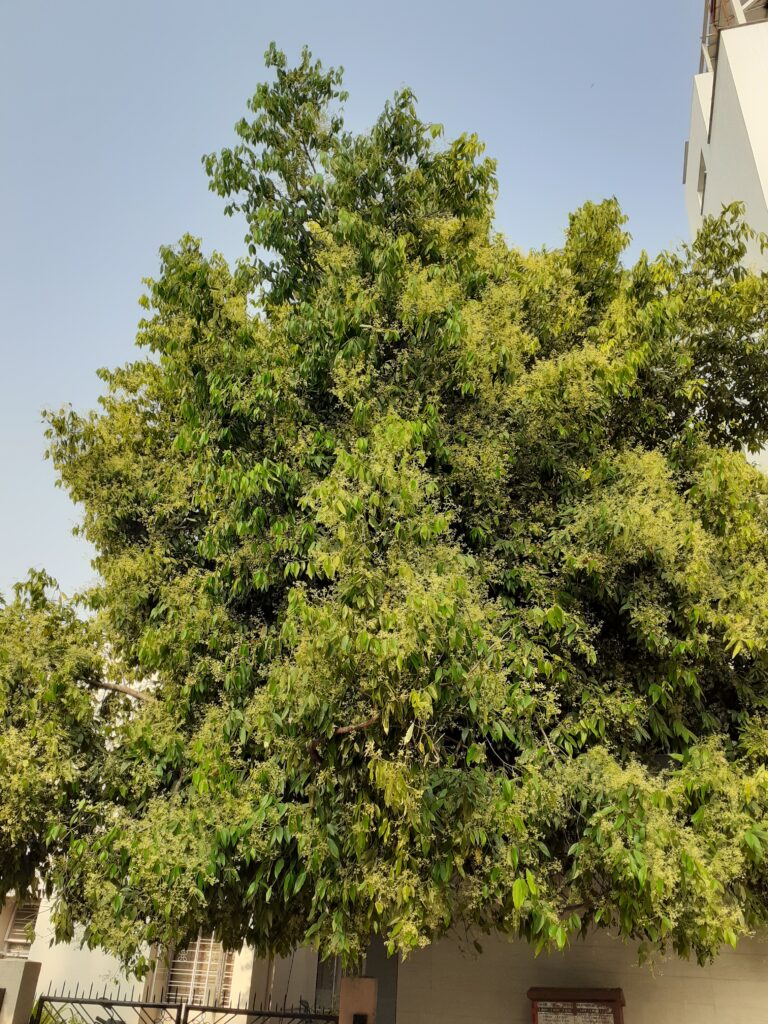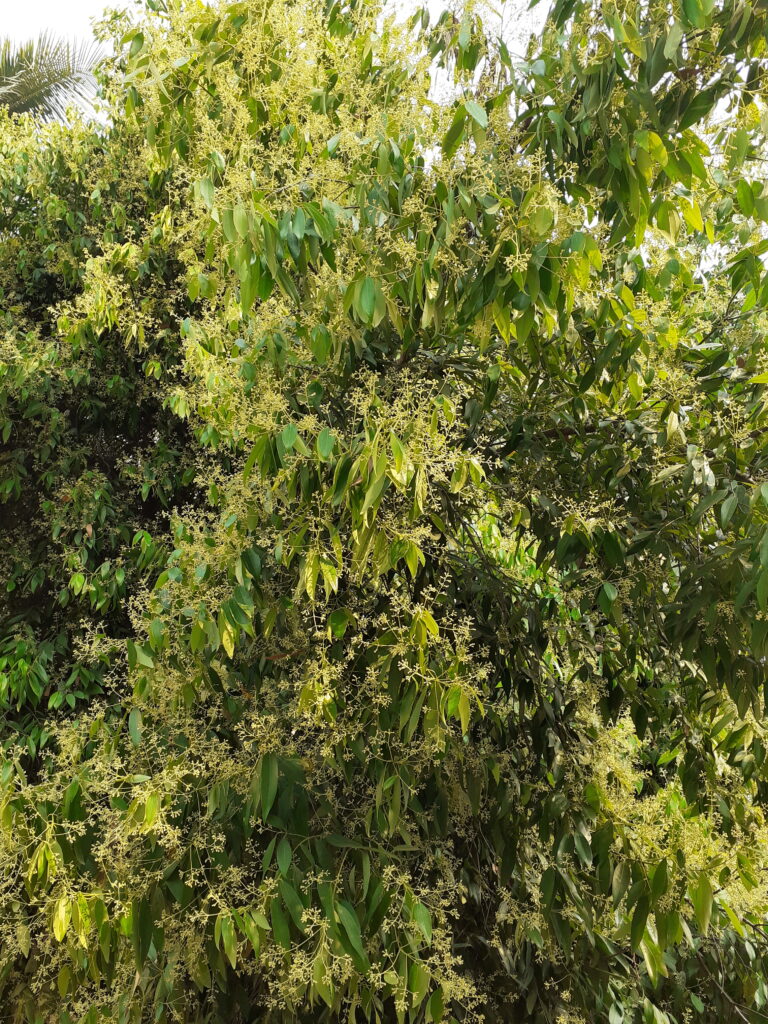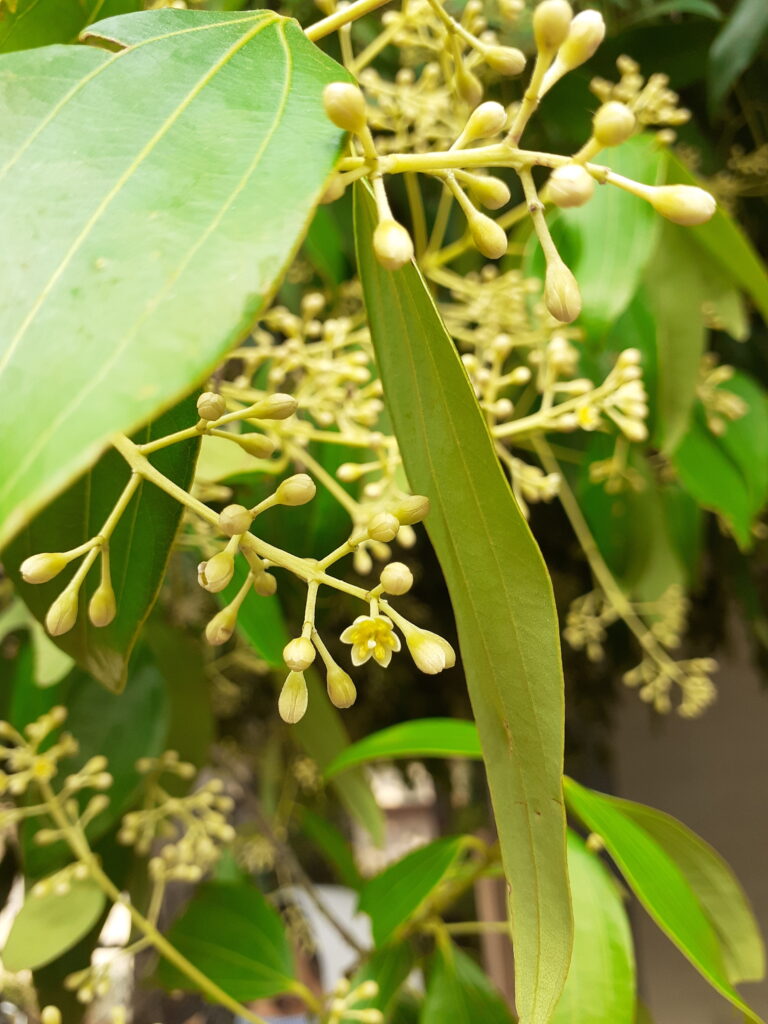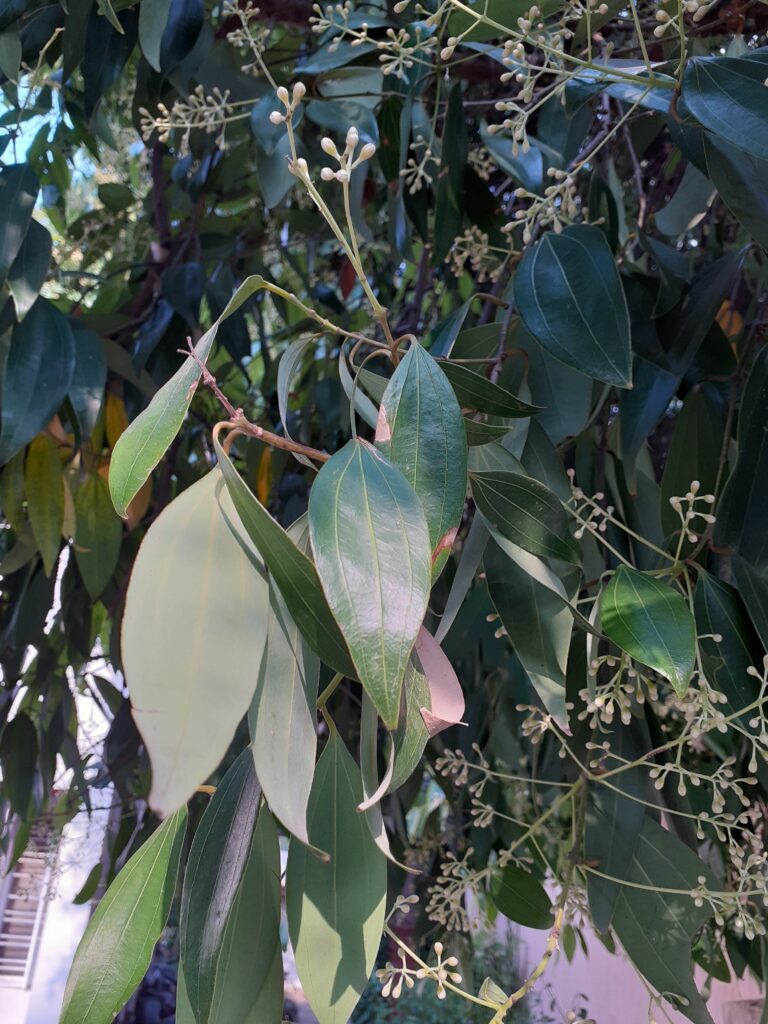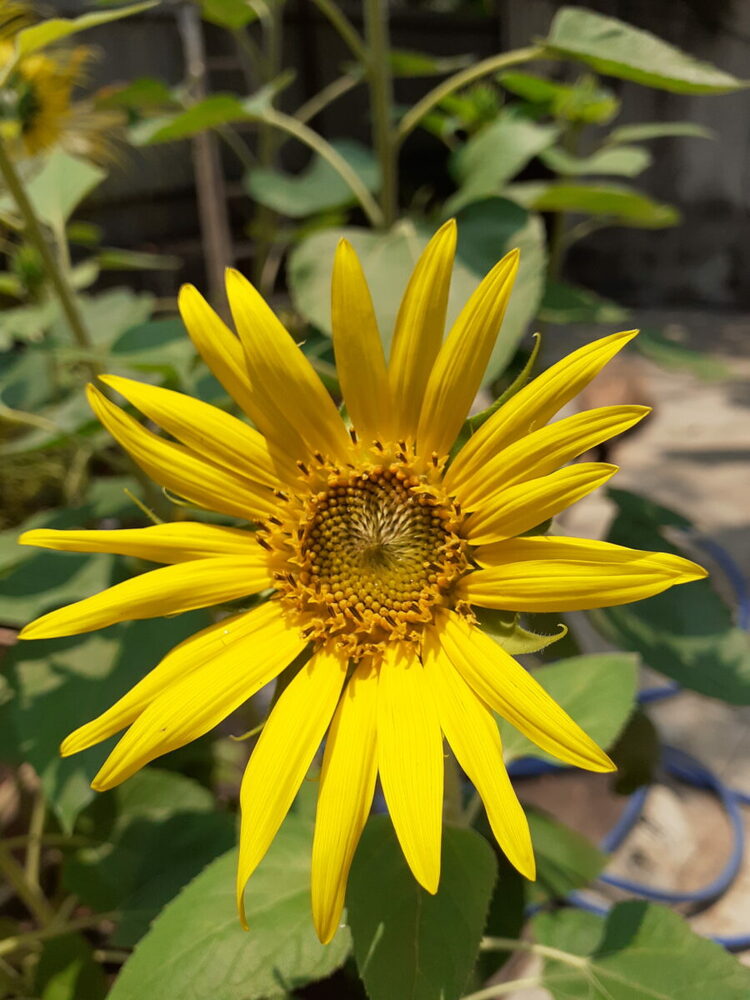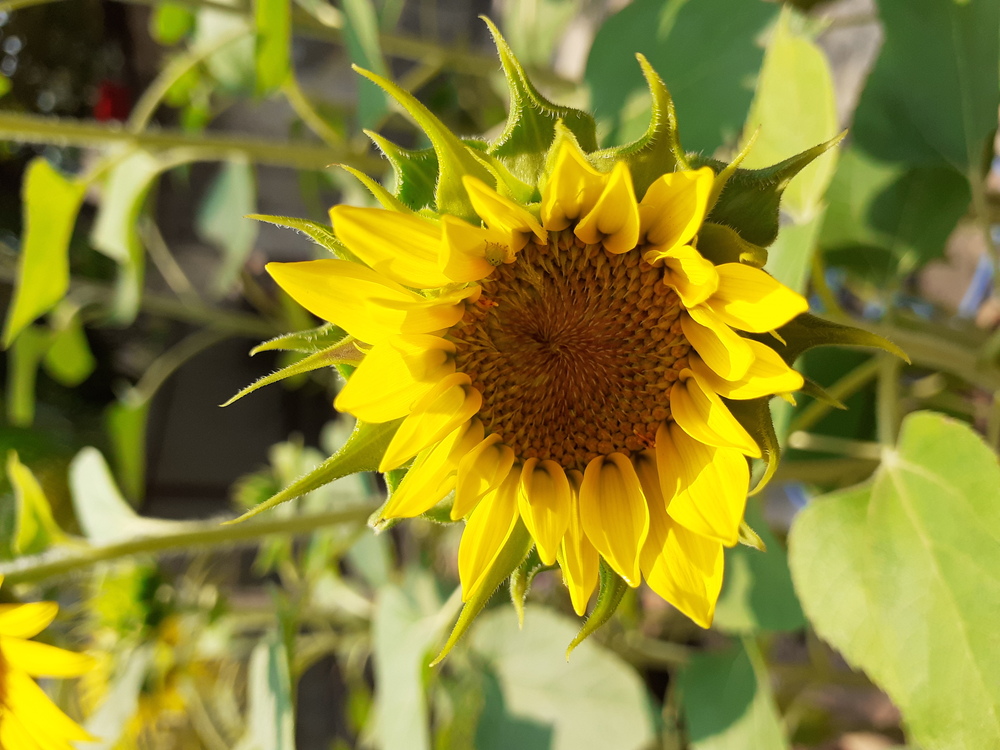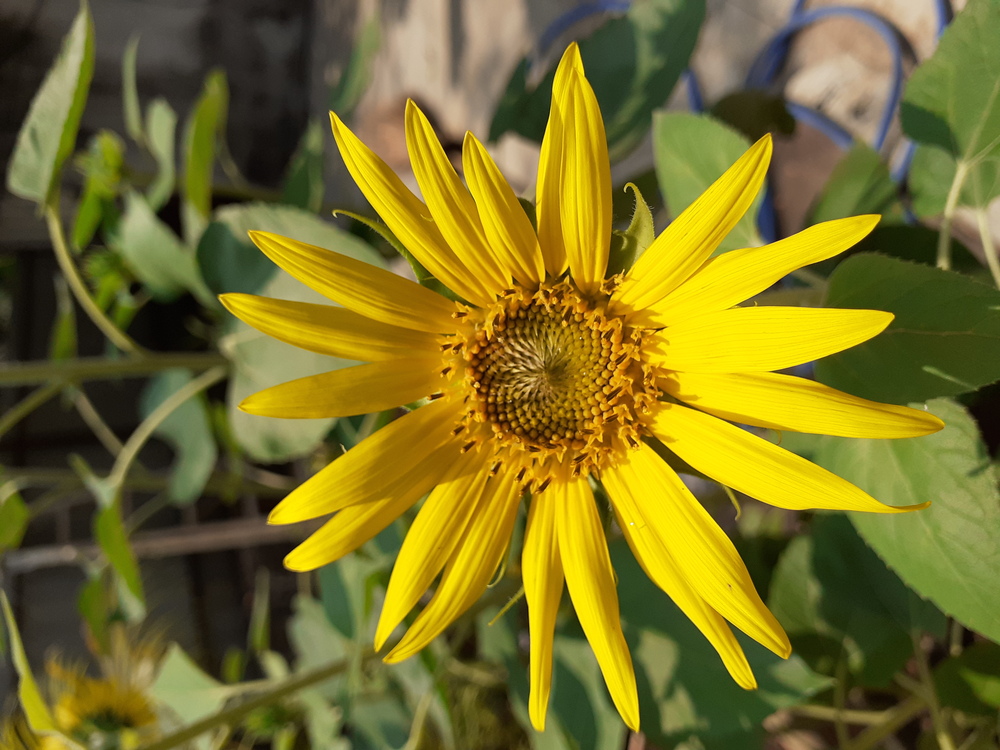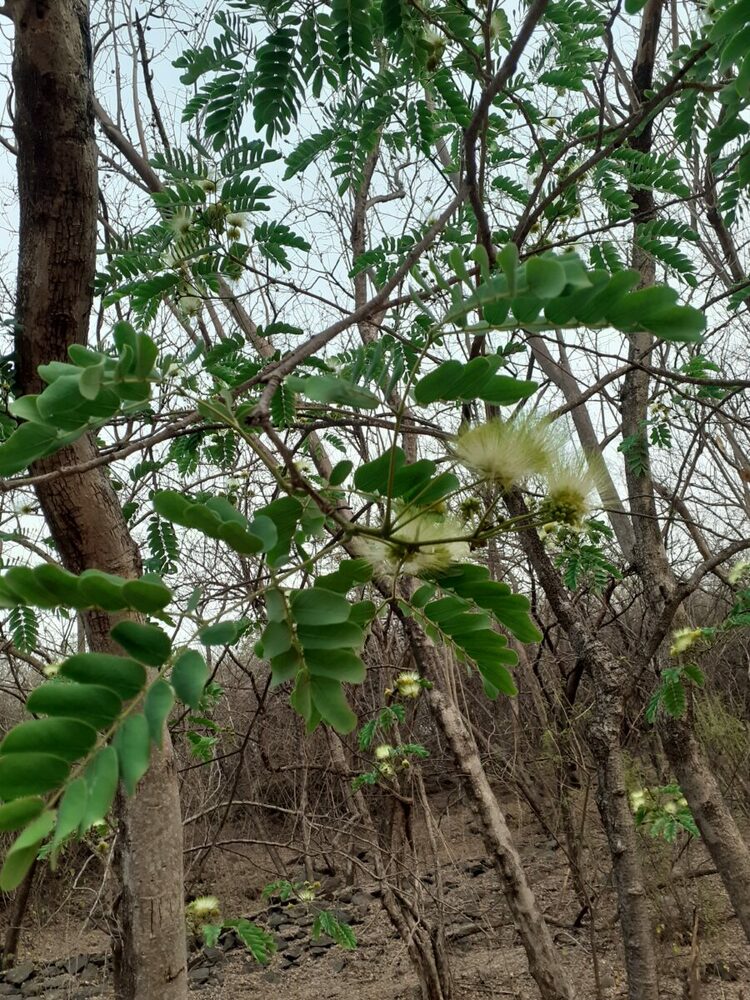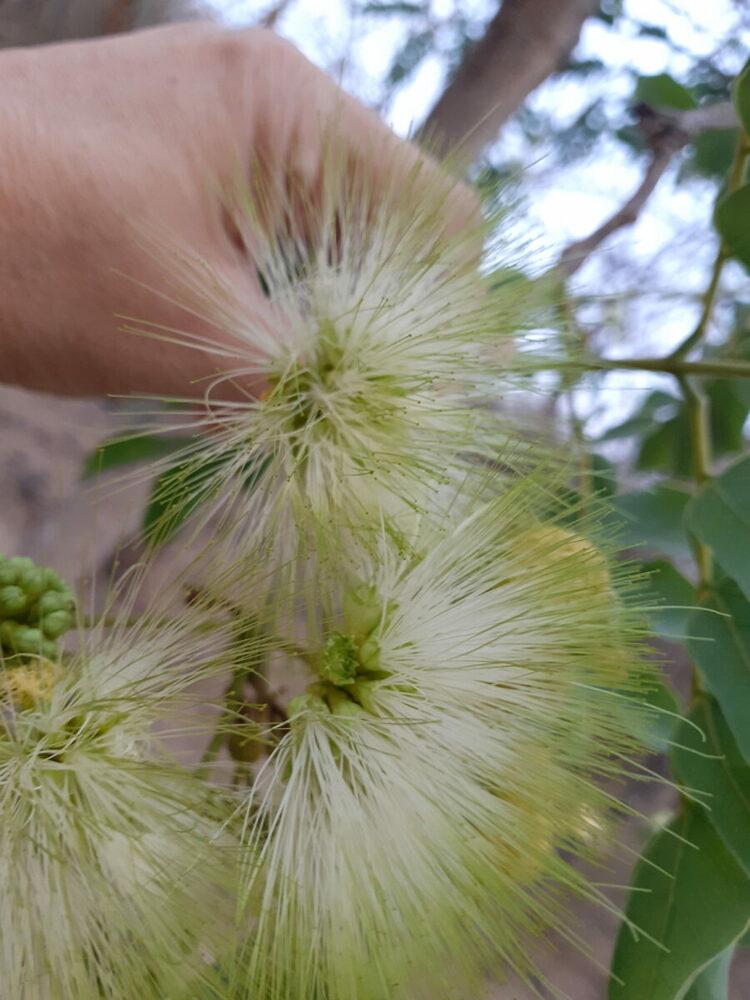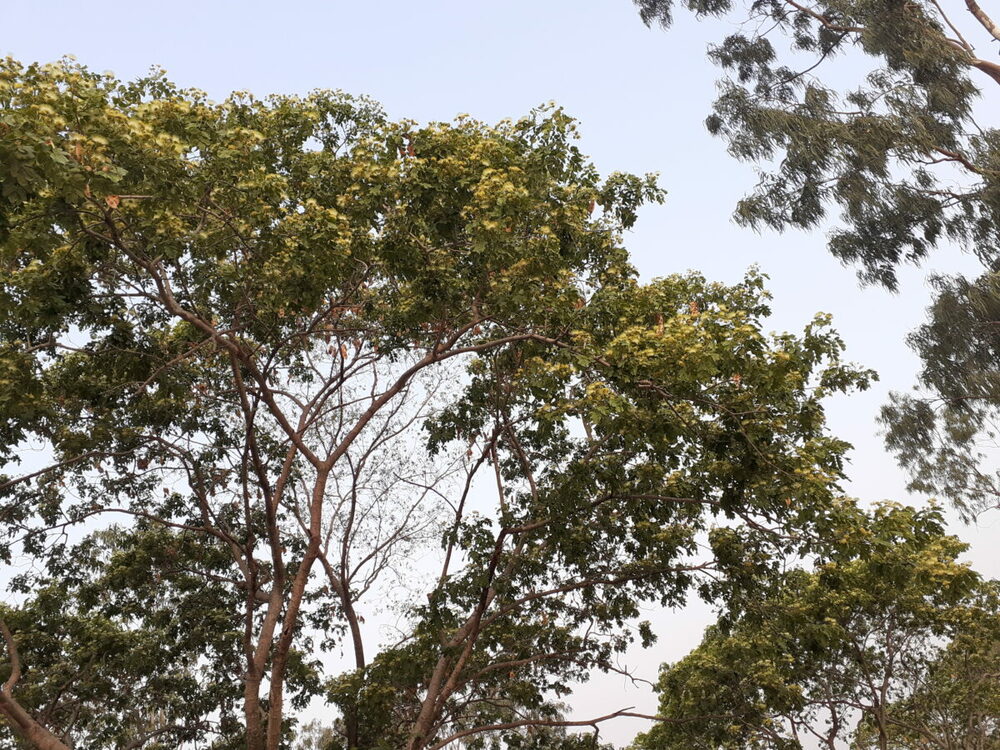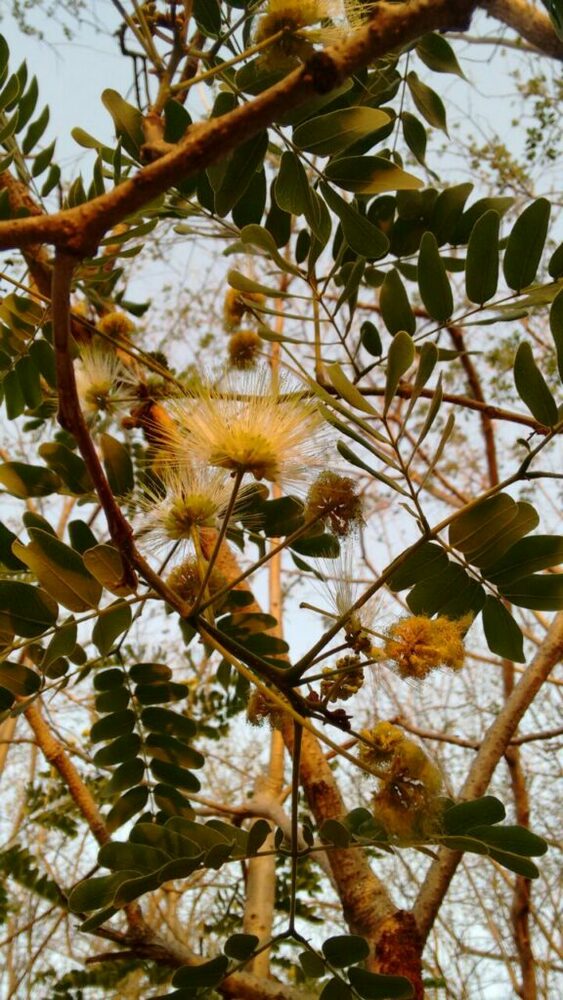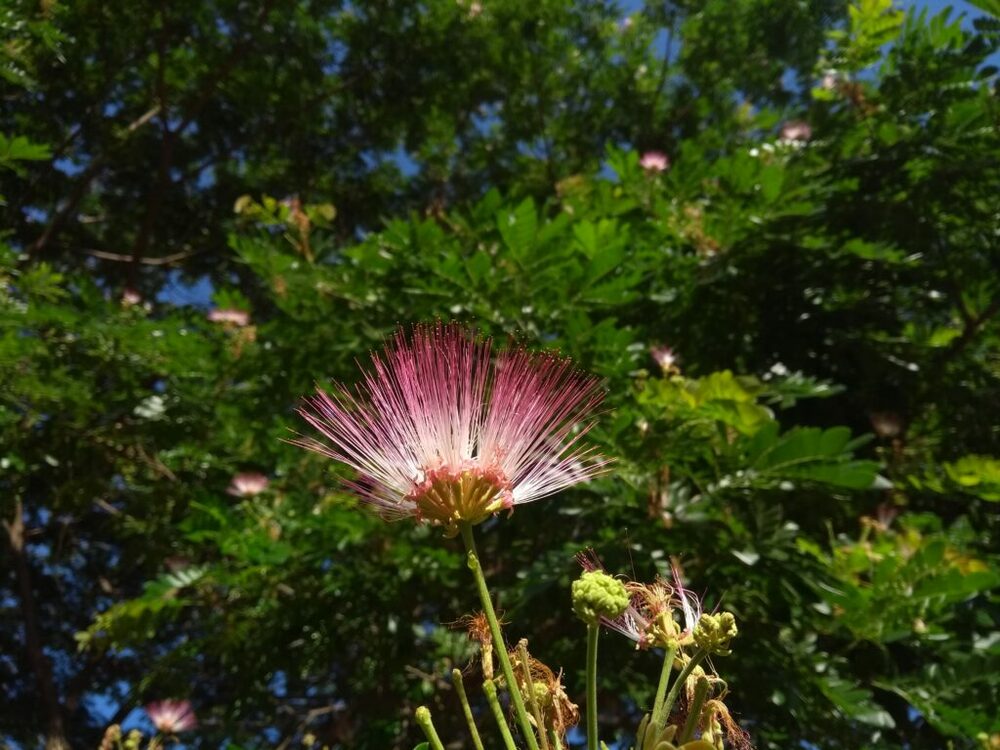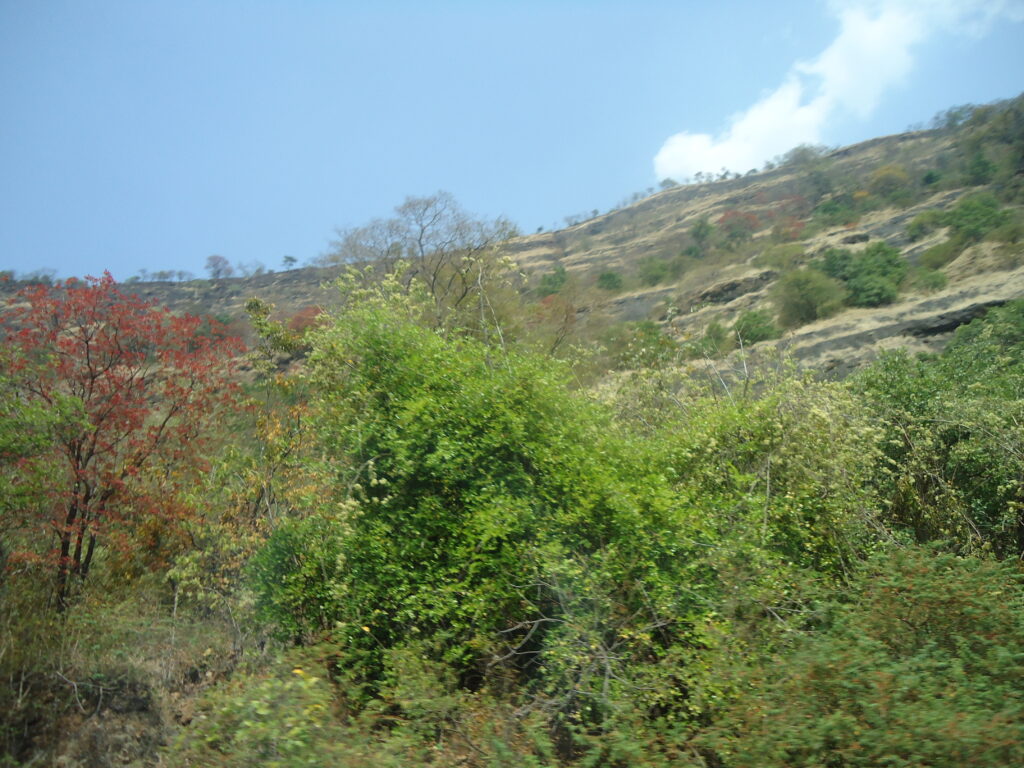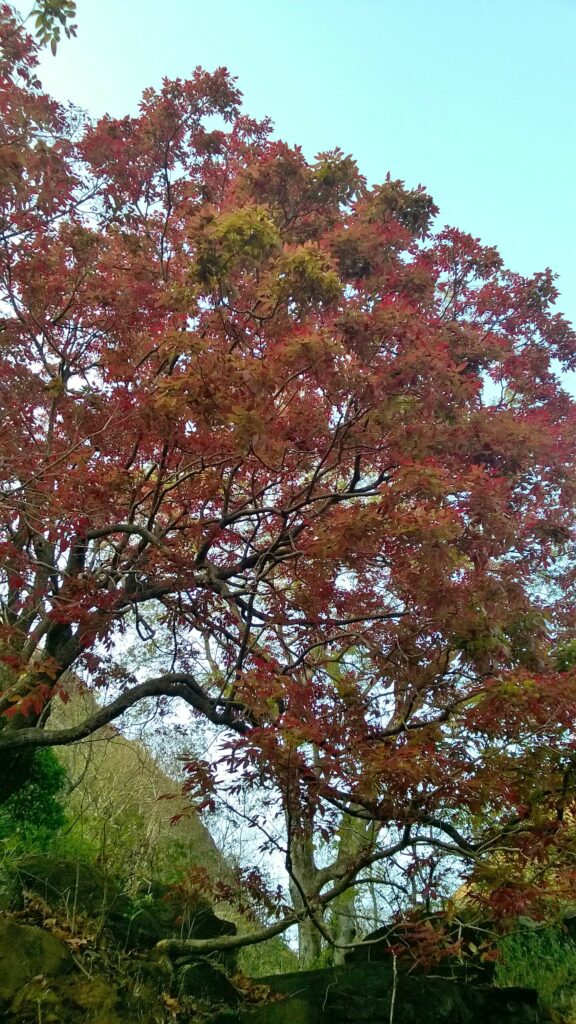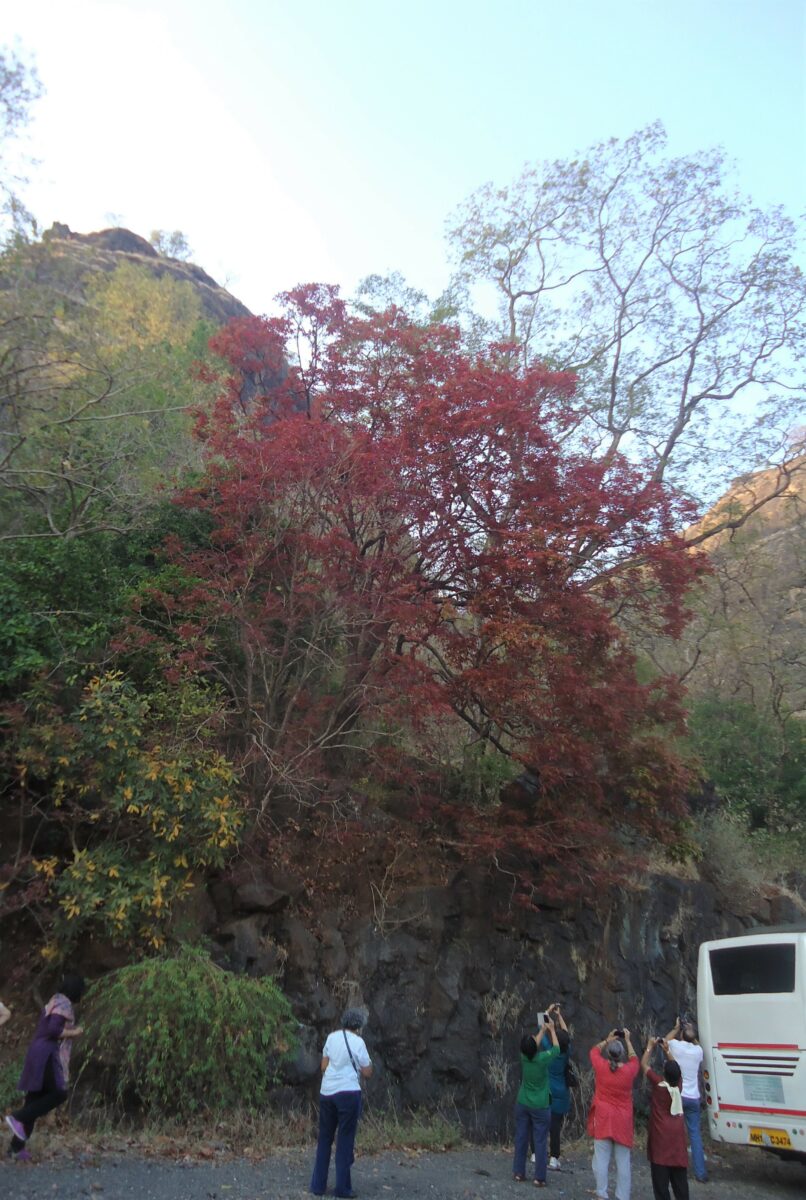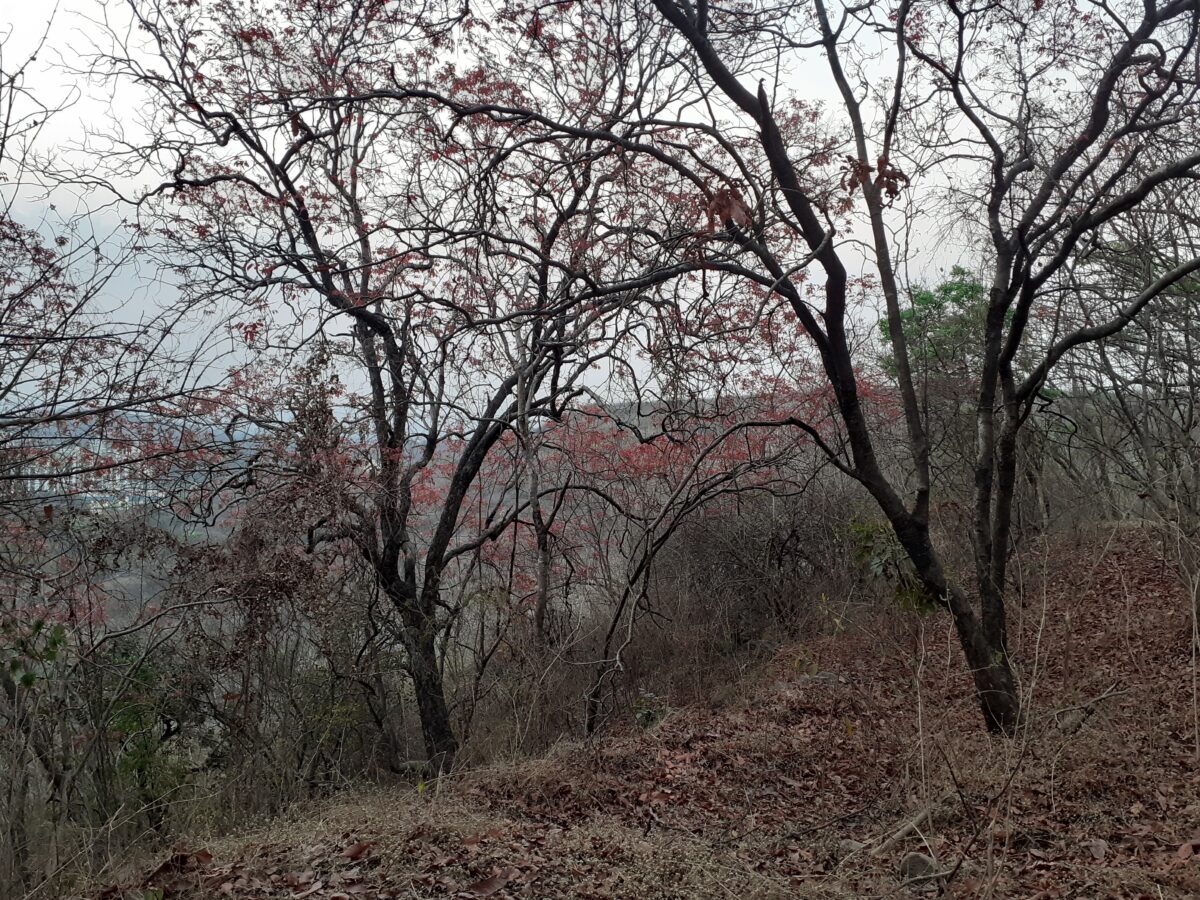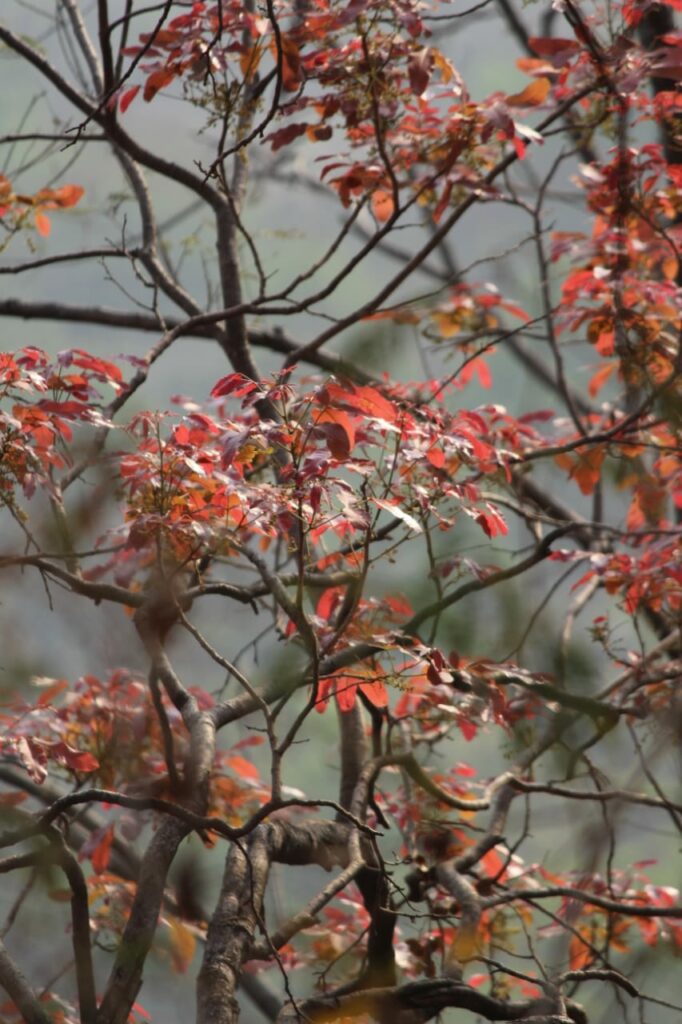“Here we go around the Mulberry bush…” is a popular nursery rhyme from my childhood and even now. Contrary to the song, it is not a bush but a small tree. Pune has a few of these trees though it is not native to this region and they do flower and fruit every year. Its botanical name is Morus alba and belongs to the Moraceae family.
I wondered about the origins of the rhyme especially when I saw this fruit laden tree. A Wikipedia article revealed some strange history. One theory suggests that the rhyme began with female prisoners at a prison in England who exercised around a Mulberry tree. Another theory suggests that the rhyme could be a joke on the difficulties faced by the silk industry.
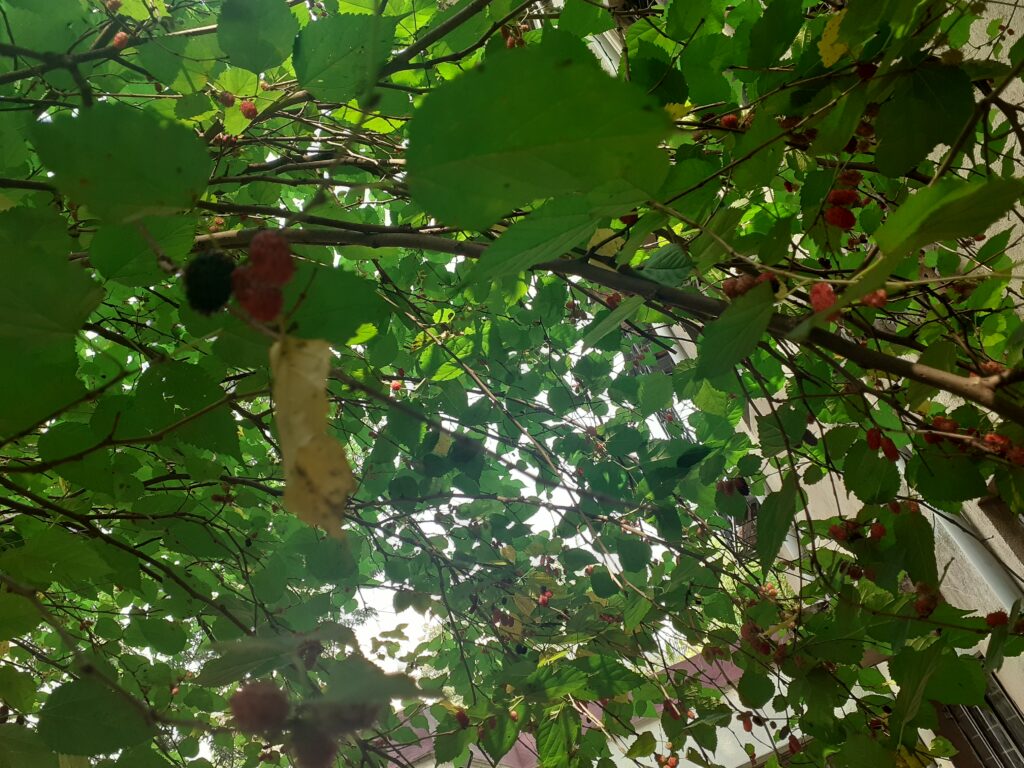
This particular tree was filled with fruit though my photo does not do justice to its abundance. The small oval shaped fruit are sweet sour to taste and best eaten when dark in colour. The fruit is also very delicate and crushes easily when handled. Its flowers are green catkins that hand down from axils.
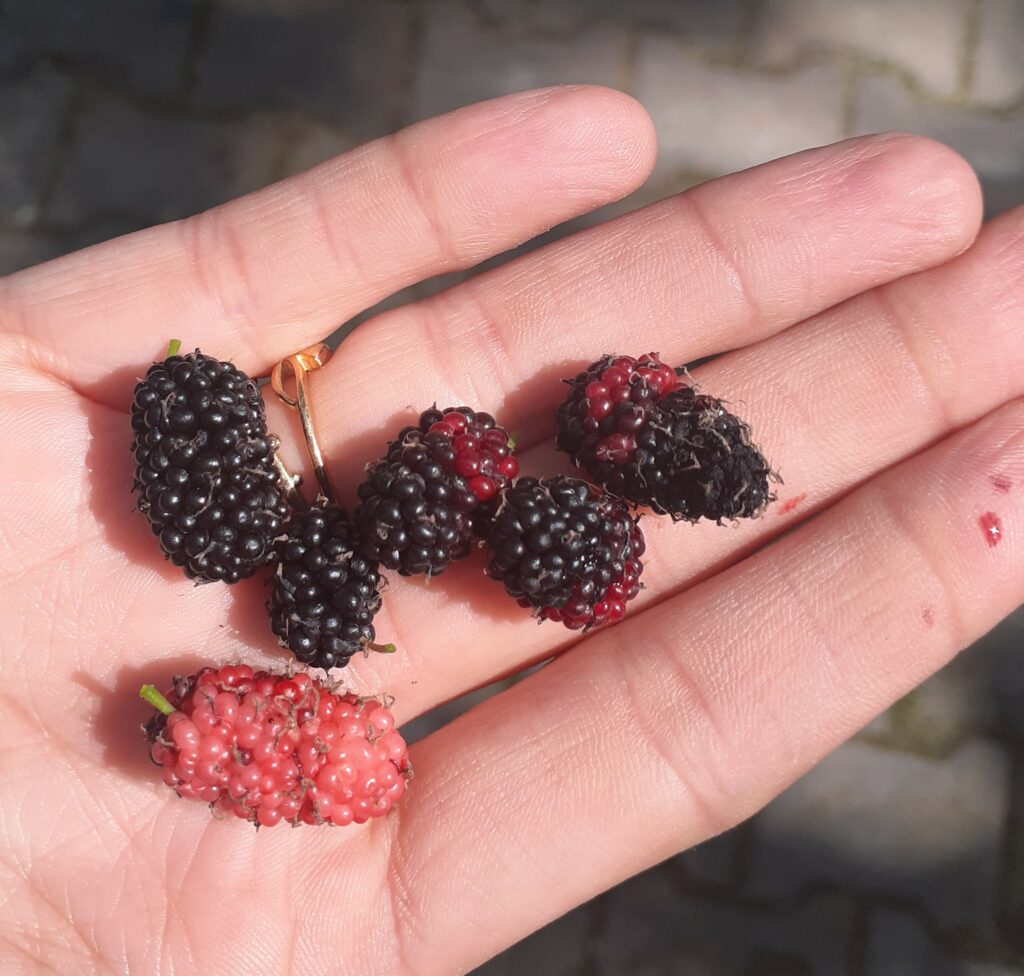
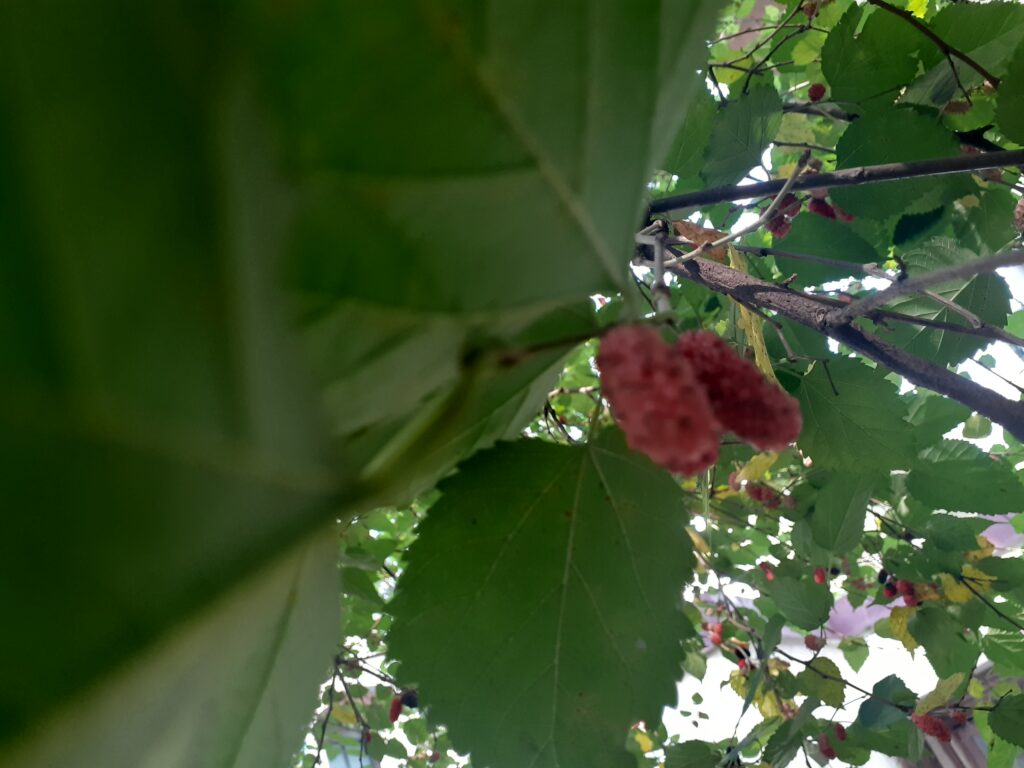
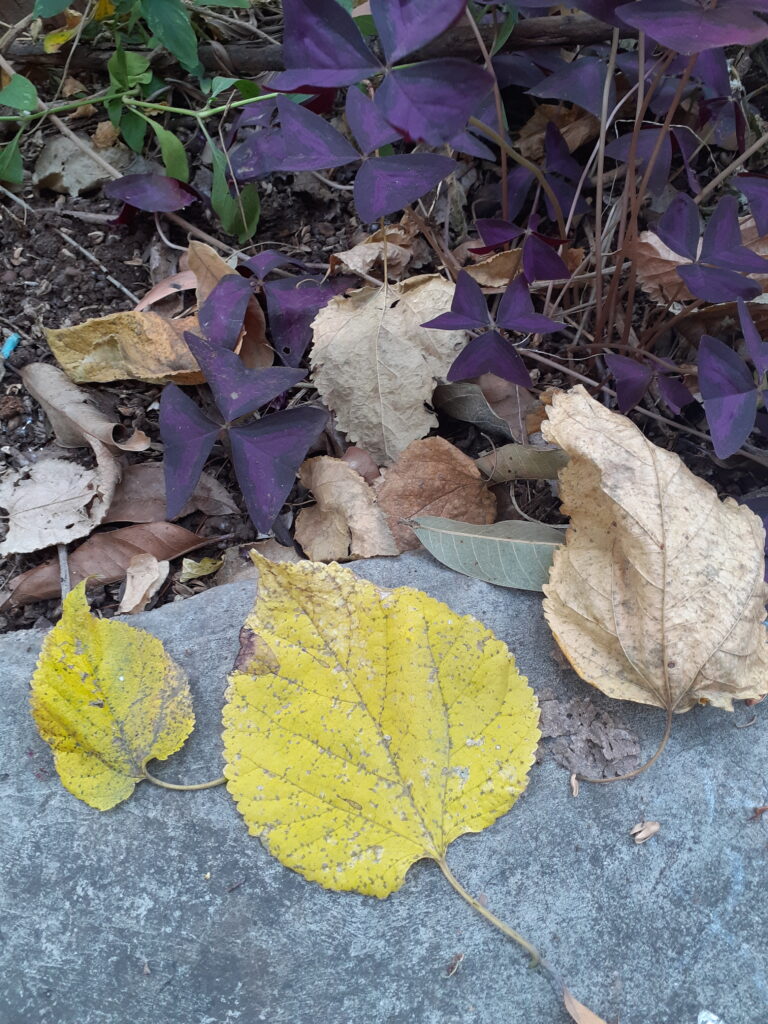
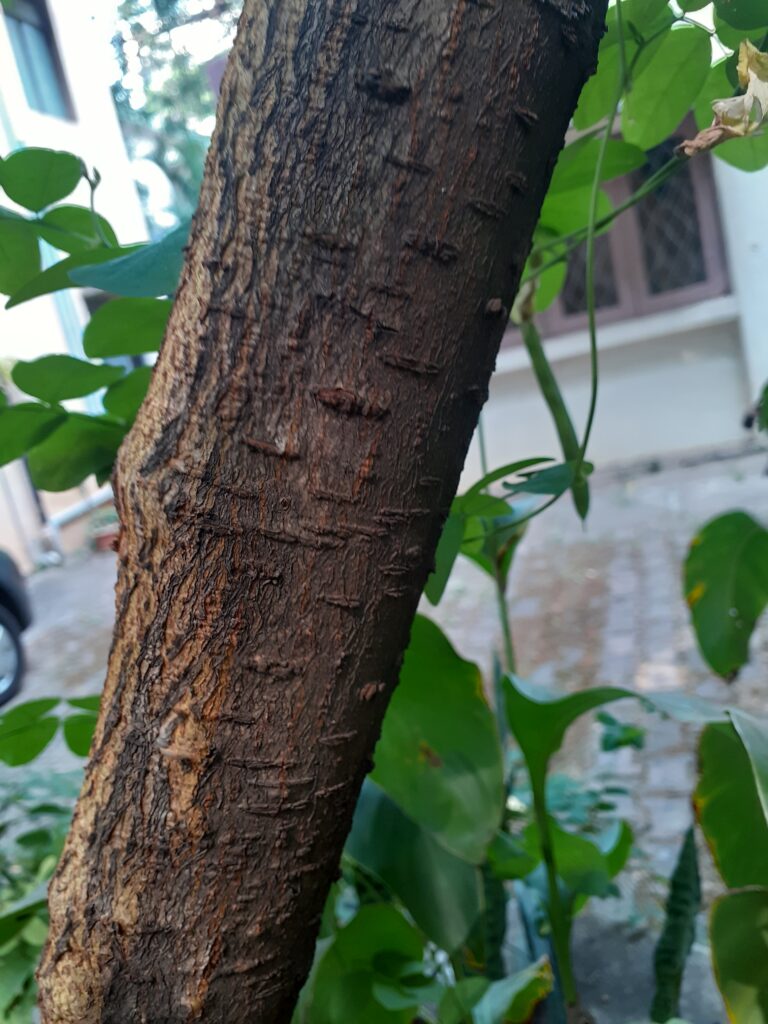
While this tree is small, I have seen a huge one at Joshimath in Uttarakhand, which is said to be an over 2000 year old heritage tree. (Sharing this image though I know it is totally unrelated to the nursery rhyme…)
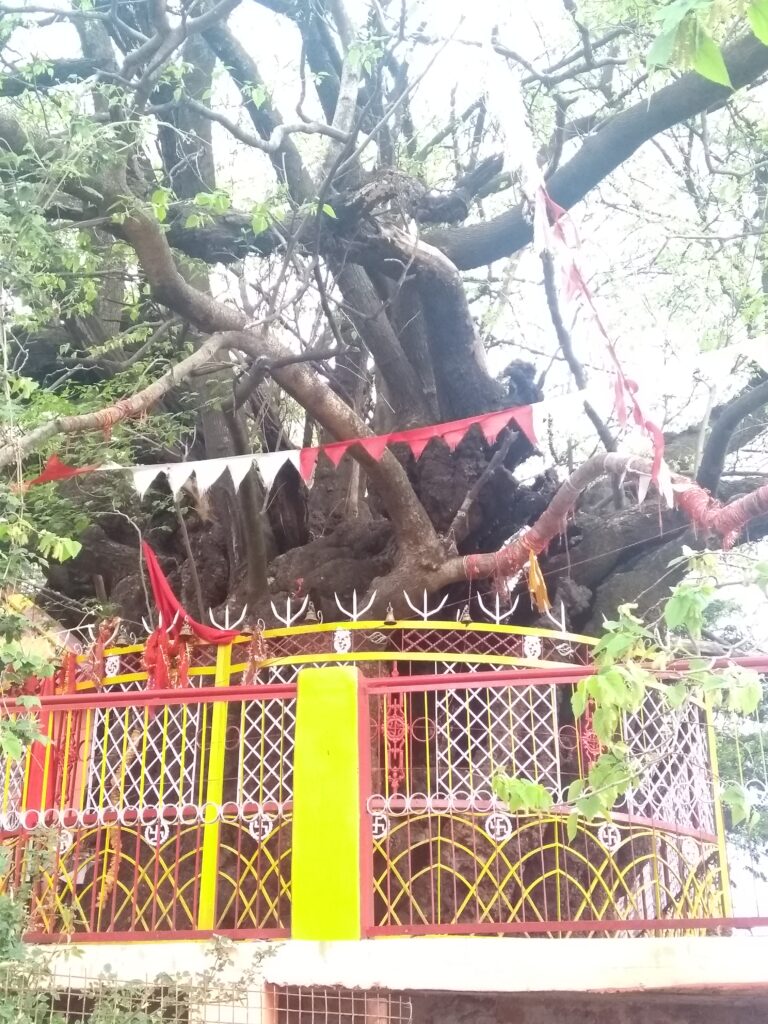
Have you seen the Mulberry Tree? Do you remember the nursery rhyme?
I am joining Parul in her ThursdayTreeLove bloghop. Do head over to see some lovely trees from around the world. Better still, join in!
Some of my blog visitors have been unable to comment here. If you face any commenting issues, please leave your thoughts here. Thanks!! I would love to hear from you!

